Warning signs
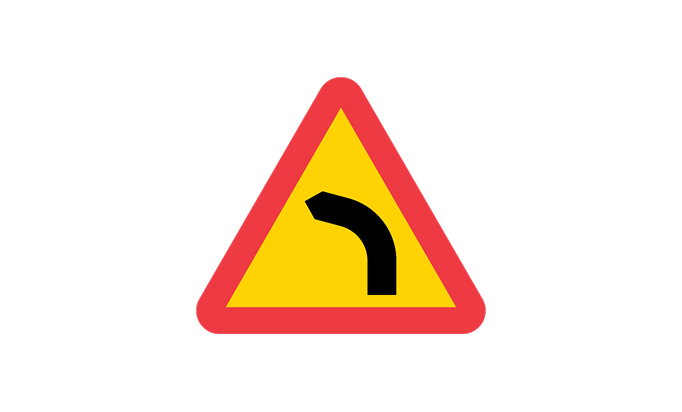
A1 Warning for a dangerous curve
The sign indicates that you are approaching a dangerous curve and shows the curve’s direction. Adjust your speed according to visibility, road conditions, the sharpness of the curve, and its banking. Never stop in an area with limited visibility. Also, pay special attention to oncoming traffic.
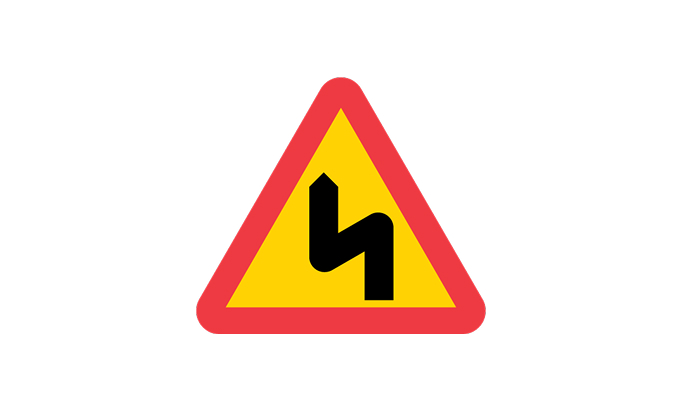
A2 Warning for multiple dangerous curves
The sign indicates multiple dangerous curves, with the direction of the first curve shown on the sign. The length of the road section can be specified with an additional panel. Reduce speed and plan your driving carefully.
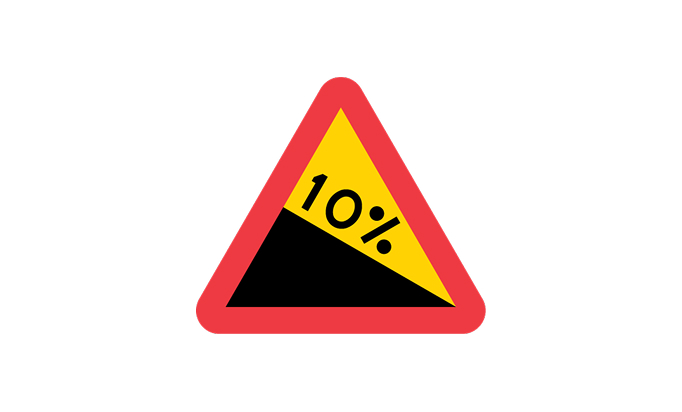
A3 Warning for a steep hill downwards
The sign indicates a steep downhill slope, with the gradient shown as a percentage. Prepare by shifting to a lower gear to avoid heavy braking and reduce the risk of brake overheating. Read the sign from left to right to correctly understand the gradient (upward or downward).
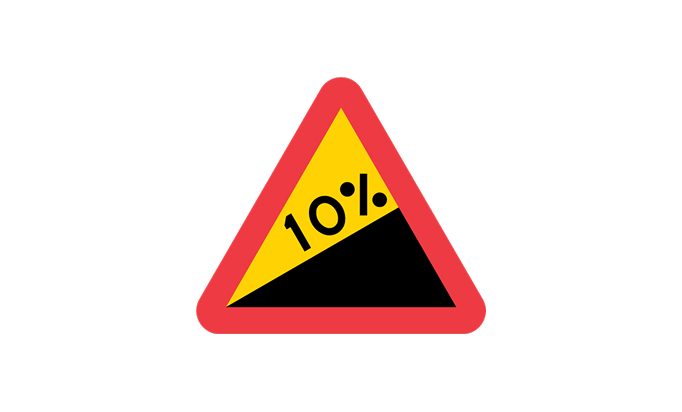
A4 Warning for a steep hill upwards
This sign warns of a steep uphill slope and shows the gradient as a percentage. Shift to a lower gear in advance to maintain engine power. Read the sign from left to right to correctly understand the gradient (upward or downward).
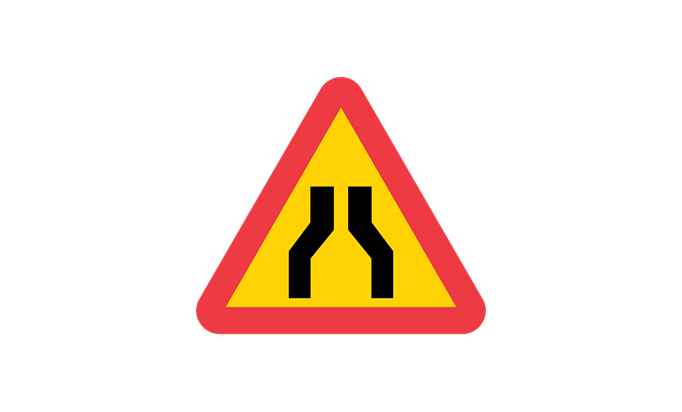
A5 Warning for a narrowing road
The sign indicates that the road is narrowing. The symbol is adapted to the actual narrowing at the location. Plan your driving and complete any overtaking well in advance to avoid dangerous situations.

A6 Warning for an opening or swing bridge
This sign warns of a bridge that can open. Be alert for traffic signals and other instructions. Always be prepared to stop and maintain a safe distance from the vehicle in front.
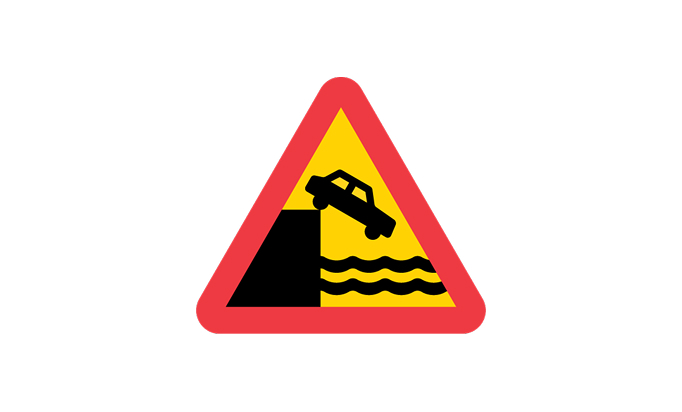
A7 Warning for a quay or water's edge
The sign indicates that the road ends at water, often at a quay. Drive cautiously and stay alert.
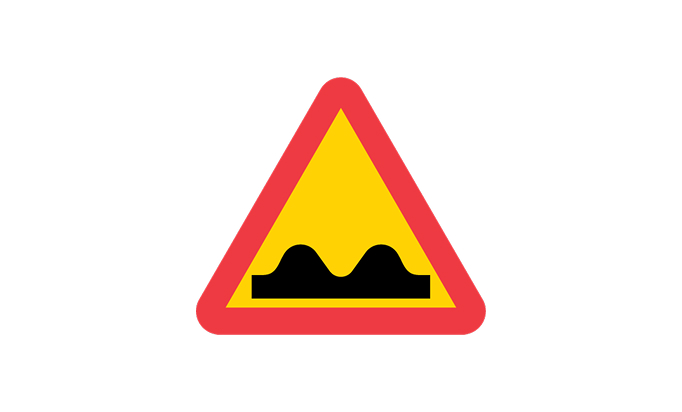
A8 Warning for an uneven road
This sign warns of irregularities or damages to the road surface that require reduced speed to maintain safety and control. The irregularities can increase braking distance, reduce traction, or increase the risk of skidding. Adjust your speed according to the road conditions.
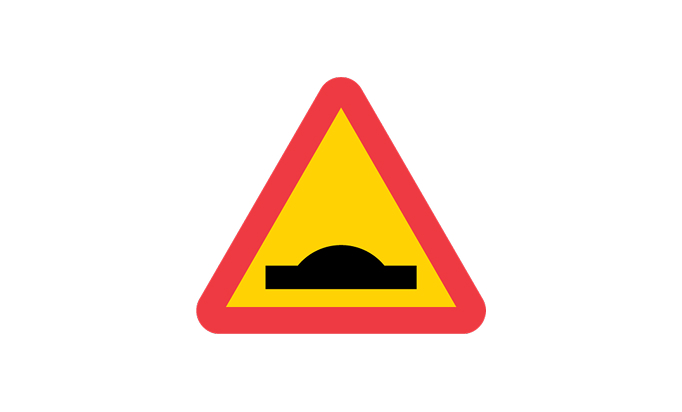
A9 Warning for a speed bump
The sign indicates a hump or dip, usually designed to reduce traffic speed. Slow down to avoid damage to your vehicle and to ensure comfort and safety.
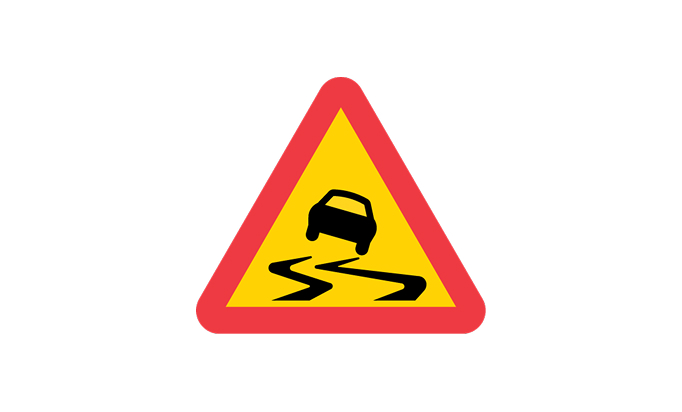
A10 Warning for a slippery road
This sign warns of poor road grip, often caused by winter conditions or rain. The sign is used not only for ice or snow but also for conditions such as newly laid asphalt. Drive at a low speed and increase the distance from the vehicle in front.
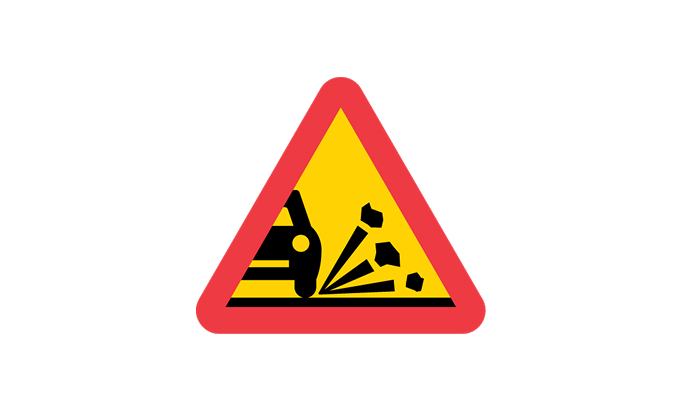
A11 Warning for loose chippings
The sign indicates a risk of loose chippings and is used only on roads where this is not a common occurrence, such as gravel roads, therefore this sign is not required to be placed there. Reduce speed when meeting traffic and avoid overtaking to prevent damage to your vehicle and the vehicles of others.
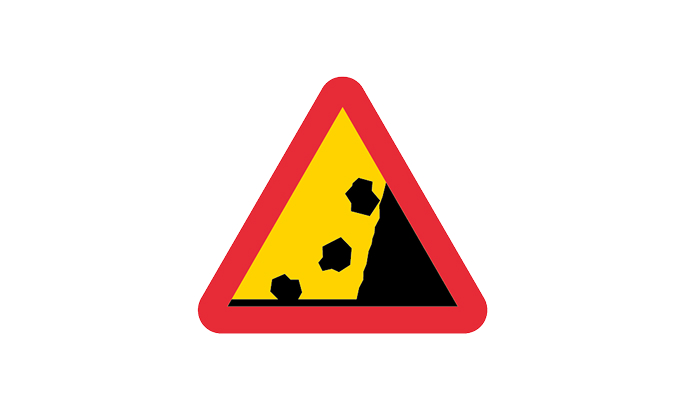
A12 Warning for falling or fallen rocks
This road sign warns of the risk of falling rocks or rocks lying on the road. It is often used in areas with rock cuts. Adjust your speed and drive cautiously, especially in bad weather.
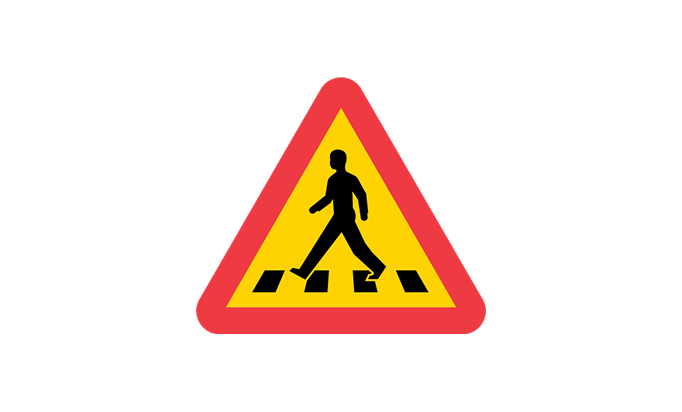
A13 Warning for a pedestrian crossing
The sign indicates that you are approaching a pedestrian crossing. Reduce speed and be prepared to stop for pedestrians. These signs are often found on busier roads, such as in urban areas and at uncontrolled crossings.

A14 Warning for pedestrians
This sign warns of a stretch where pedestrians frequently move or cross the road. Lower your speed and be particularly cautious in areas with limited visibility or high activity.

A15 Warning for children
This sign warns of a road section where children frequently move or cross the road. Children can be difficult to spot and often lack an understanding of traffic hazards. Be particularly vigilant and reduce your speed, especially near schools, preschools, or residential areas where this sign is common.
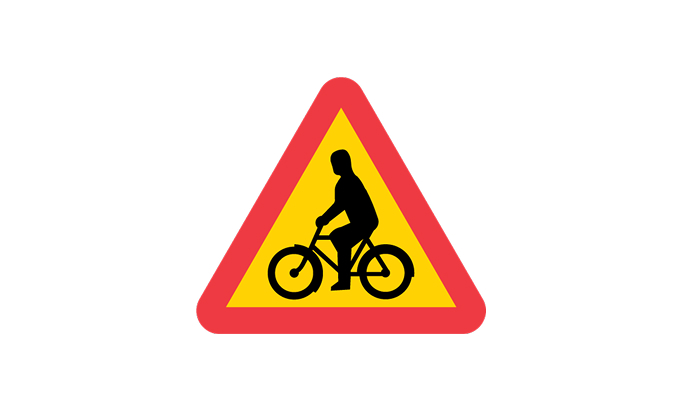
A16 Warning for cyclists and moped riders
The sign indicates a road section where cyclists and moped riders regularly cross or enter the road. Both Class I and II mopeds may be present. Adjust your speed and be attentive to traffic on your sides, especially in areas with limited visibility.
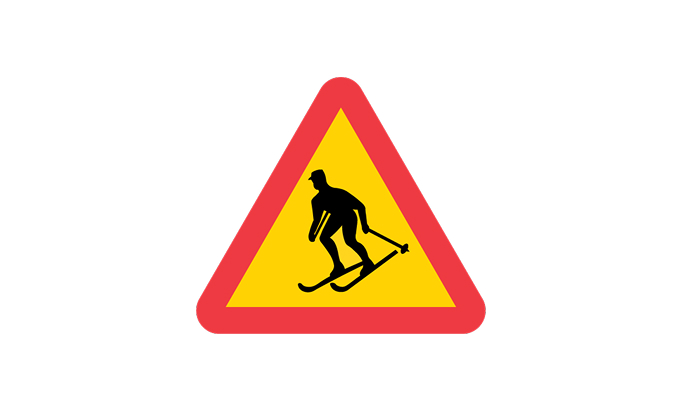
A17 Warning for skiers
This sign warns of a crossing with ski tracks where skiers often pass the road, mainly during the winter. Drive carefully, as skiers may not always be attentive to traffic, particularly in recreational areas or near ski centers.
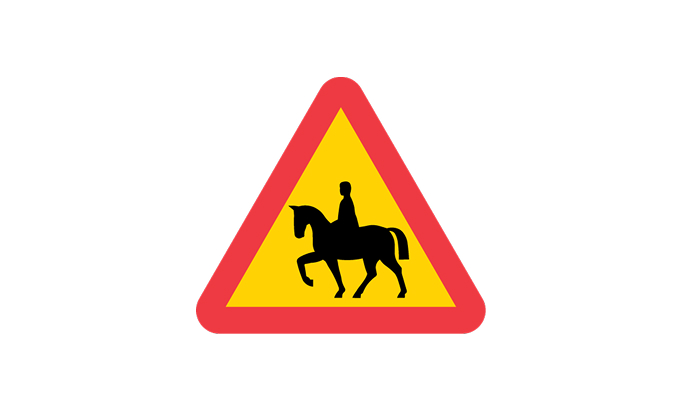
A18 Warning for horse riders
This sign marks a road section that horses and riders frequently use or where they may cross the road. Horses can easily be startled by traffic. Drive slowly, keep your distance, and never honk near horses to avoid scaring them and causing accidents.

A19 Warning for animals
The sign indicates an increased risk of animals being on or near the road. The symbol adapts to the type of animals expected, such as moose or deer. The risk of encountering wild animals is highest at dawn and dusk. Reduce your speed and stay alert to the sides of the road to react in time if needed.

A20 Warning for road works
This sign warns of a road section where roadworks are in progress. Reduce your speed and drive with extra caution, as workers may be near or on the road. Follow any temporary instructions and road signs to avoid dangerous situations.
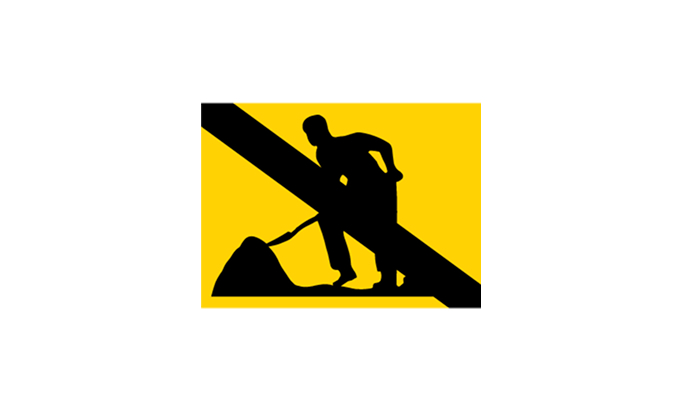
A21 Warning for end of a road work area
The sign indicates that a road section previously marked with the roadworks warning sign has now ended. It is often used when it is not obvious where the roadworks end.

A22 Warning for traffic signals ahead
This sign indicates that there is a traffic signal ahead. It is often used where traffic signals may be unexpected, such as on rural roads. In urban areas, the sign is used only if there are special reasons to do so. Be prepared to slow down and stop if necessary.
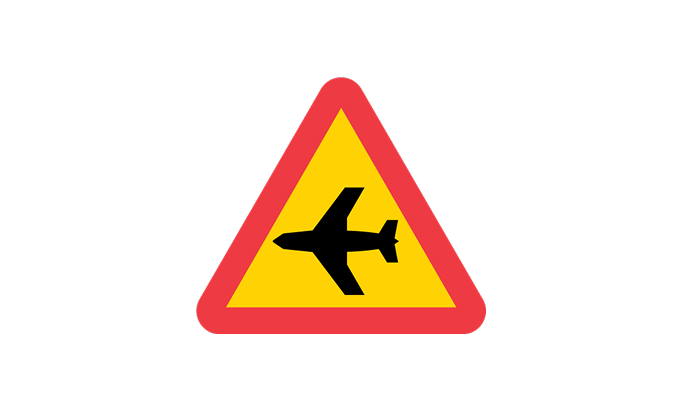
A23 Warning for low-flying aircraft
The sign warns of low-flying aircraft, which may cause sudden noise or distractions. It is commonly found near airports or military areas.
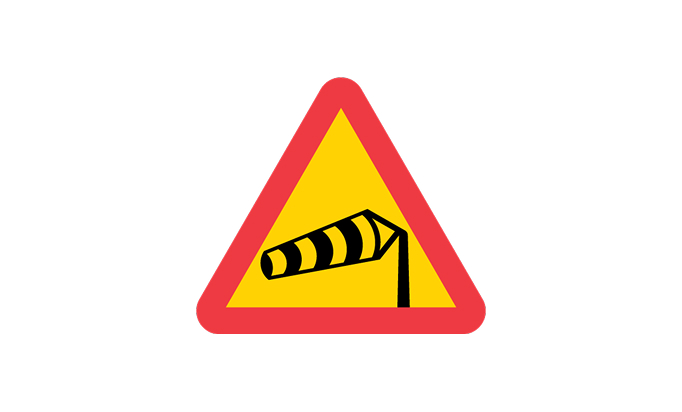
A24 Warning for strong side winds
This sign indicates a road section where strong side winds are common, such as on large bridges or open fields. Two variants exist: one showing wind from the right and the other from the left. Hold the steering wheel firmly and reduce your speed if needed.
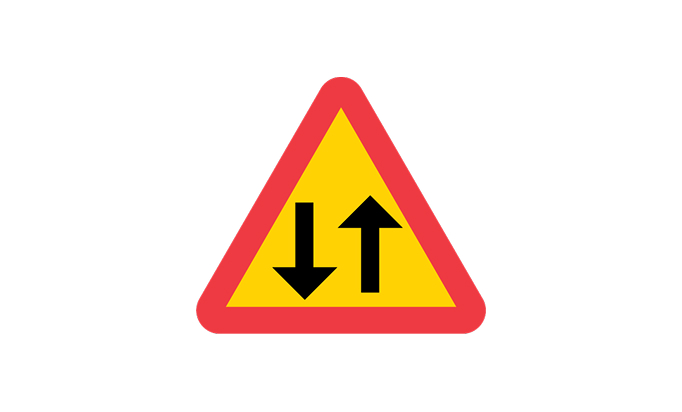
A25 Warning for two-way traffic
The sign marks a transition from one-way traffic to two-way traffic. It is also used where a street that has been one-way ceases to be one-way. Stay alert and keep to your side of the road.
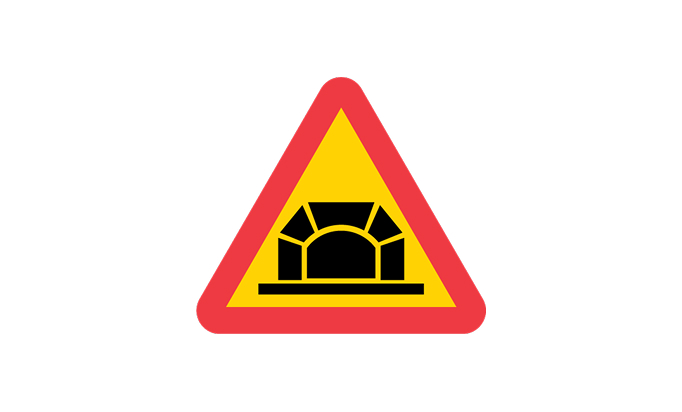
A26 Warning for a tunnel
The sign indicates the presence of a tunnel ahead. Check if your lights are on and adjust to any restrictions, such as bans on overtaking or lower speed limits, in the tunnel.
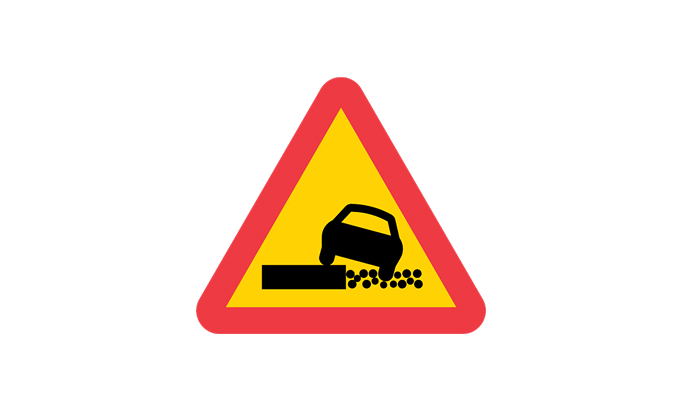
A27 Warning for soft verge or high edge of the carriageway
This sign warns of soft verges that may increase the risk of running off the road, especially for heavy vehicles. Avoid driving too close to the edge and adjust your speed as necessary.

A28 Warning for a junction
This sign warns of an upcoming junction with at least two roads and is commonly used on smaller roads, especially where visibility is limited. Right-of-way rules apply where this sign is posted, meaning you must give way to traffic coming from the right. Slow down and approach the junction with extra caution.
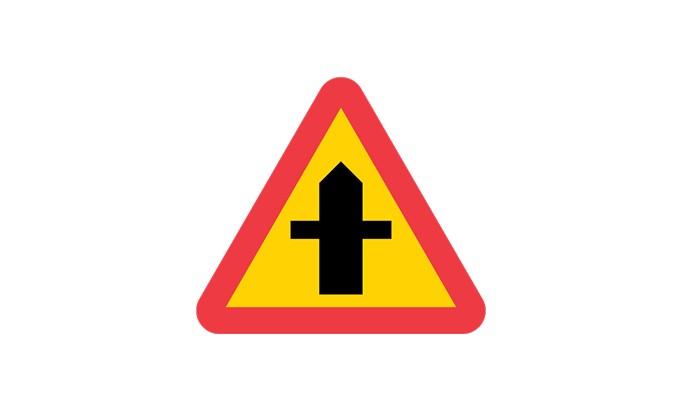
A29 Warning for a junction where traffic on the connecting road must give way
The sign indicates a junction where vehicles on the connecting roads, shown as thinner lines, must give way or stop. The thick vertical line represents the road that has priority, and together with the other lines show the junction's layout. You can typically pass at normal speed but stay alert and ready to brake, especially if visibility is poor.
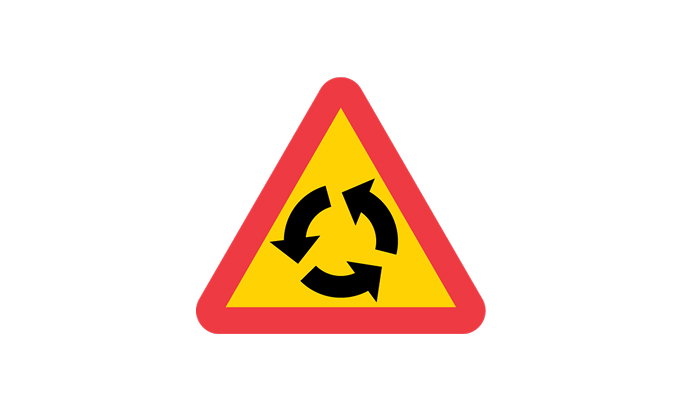
A30 Warning for a roundabout
This sign warns of a roundabout ahead. Reduce your speed in advance and be prepared to give way to traffic already in the roundabout.
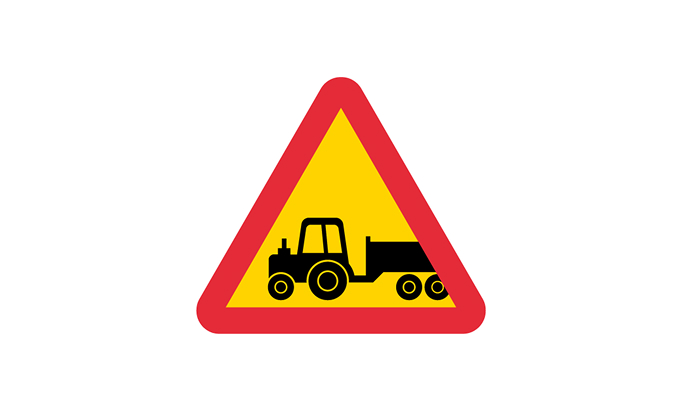
A31 Warning for slow-moving vehicles
The sign indicates an area where slow-moving vehicles, designed for a maximum speed of 30, 40, or 45 km/h, often cross or enter the road. Be patient and drive cautiously, as these vehicles may need more time to maneuver or leave the road.
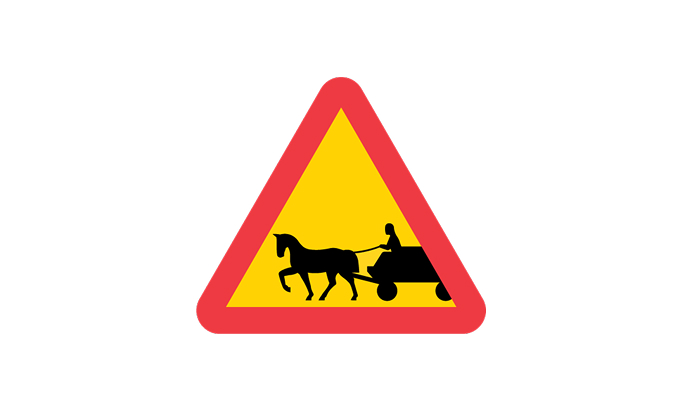
A32 Warning for horse-drawn vehicles
This sign warns of a road section where horse-drawn vehicles often cross or travel on the road. Other symbols may be used depending on local conditions. Reduce your speed and pass carefully to avoid scaring the animals or causing accidents.
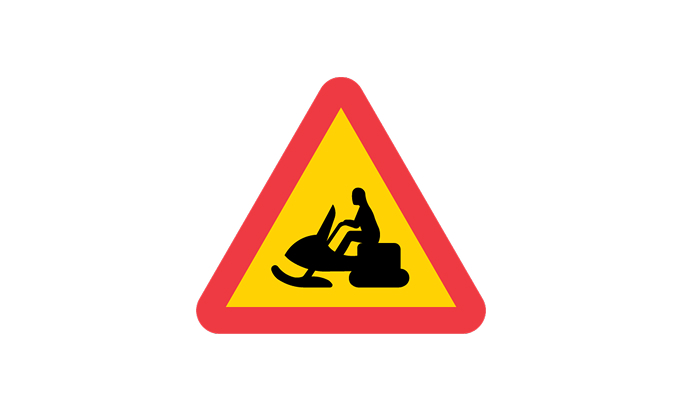
A33 Warning for snowmobiles traffic
The sign indicates a location where snowmobiles frequently cross or enter the road. Be particularly attentive during winter and adjust your speed to avoid accidents.
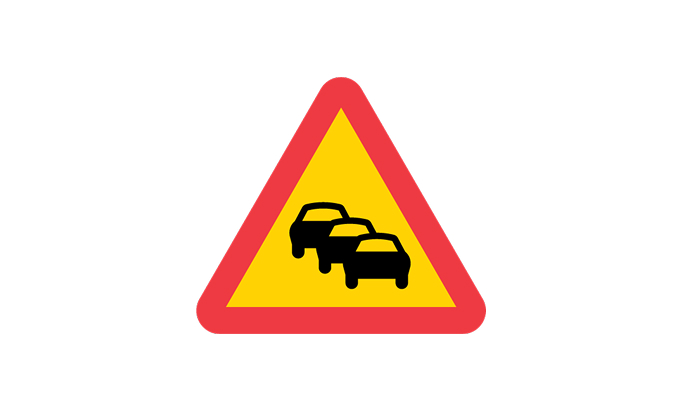
A34 Warning for likely queues ahead
The sign indicates a road section with a risk of traffic congestion, often during rush hours or in areas prone to traffic jams. Maintain a safe distance, stay alert, and avoid sudden braking to reduce the risk of accidents in stop-and-go traffic.
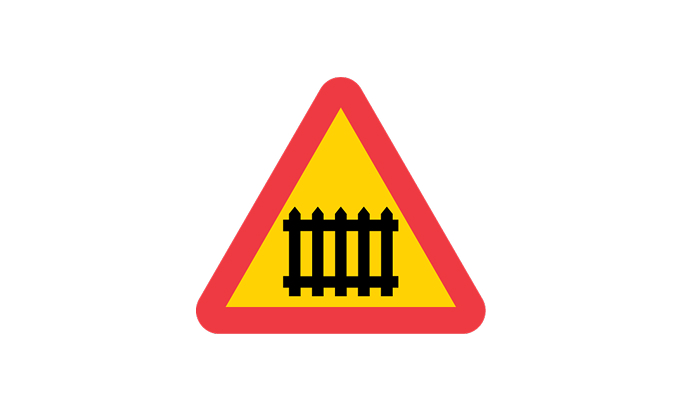
A35 Warning for a level crossing with gates
The sign warns of a railway or tramway crossing with gates. Wait until the gates are fully raised before you proceed driving, and never cross the tracks when warning signals are active.

A36 Warning for a level crossing without gates
This sign warns of a railway crossing without gates. Be extra cautious and consider both your safety and that of others. If visibility is limited, stop and listen for trains before crossing. Remember that trains require significantly longer distances to stop than cars.
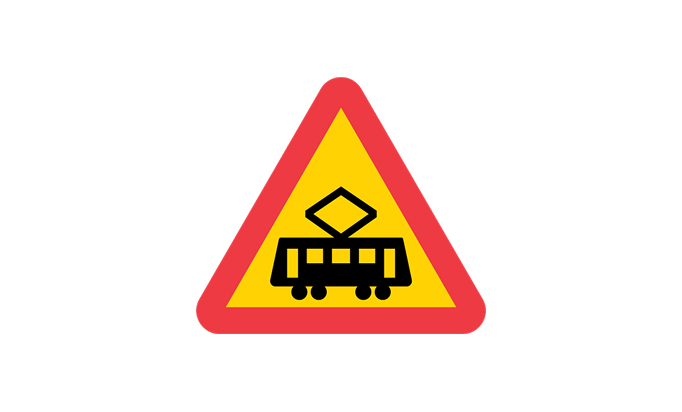
A37 Warning for a tramway crossing
The sign warns of a tramway crossing without gates. Always give way to trams and stay alert, ready to give way when necessary.
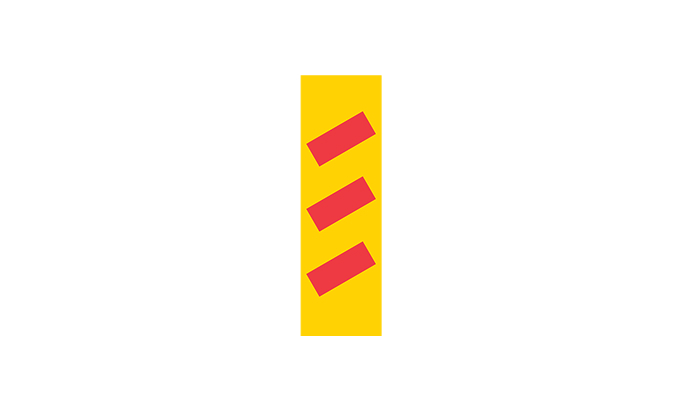
A38 Distance to upcoming level crossing
These signs show the distance to a railway crossing in thirds and are usually placed beneath the signs A35, A36, or A37. The sign with three markers is typically 150 meters from the crossing, the sign with two markers is 100 meters away, and the sign with one marker is 50 meters away. These signs help you judge the distance to the crossing and be prepared to stop if necessary.
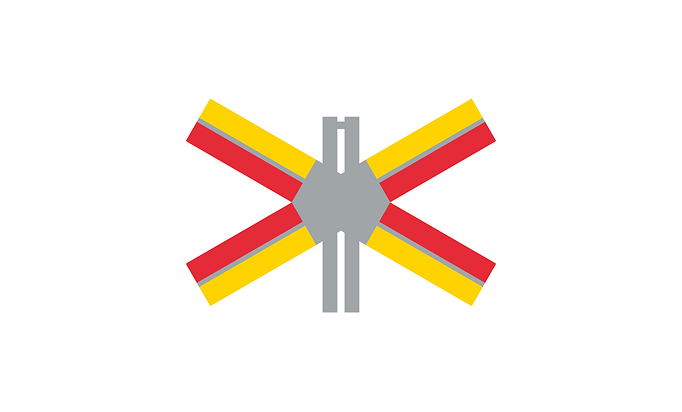
A39 Level crossing
The sign is placed directly before a railway or tramway crossing and indicates the exact location of the crossing. It may be missing on private roads with low traffic, so always drive in a way that allows you to stop safely before the tracks, even if no sign is posted.
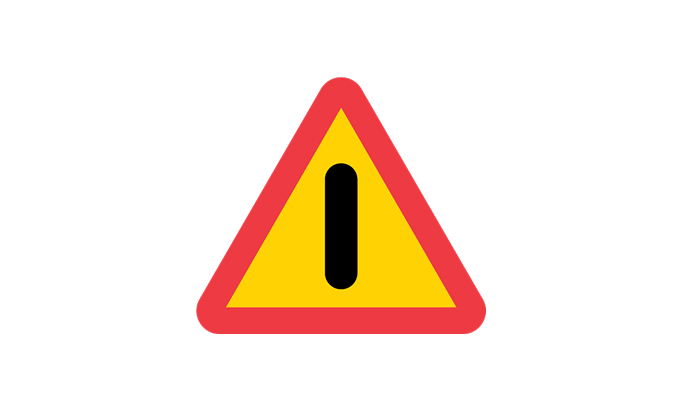
A40 Warning for other dangers
The sign indicates a danger not covered by any other warning sign. The nature of the danger is specified on an additional panel. Reduce your speed and be extra vigilant for unusual or unexpected situations.
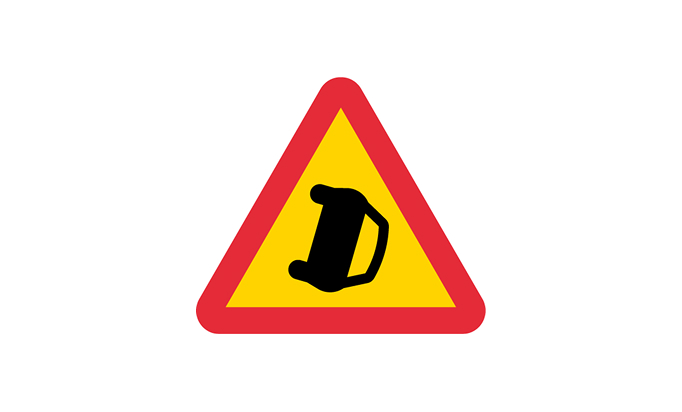
A41 Warning for an accident
The sign warns of an area where there may be a risk of accidents. Reduce your speed and be alert for hazards such as stationary vehicles, rescue operations, or obstacles on the road.